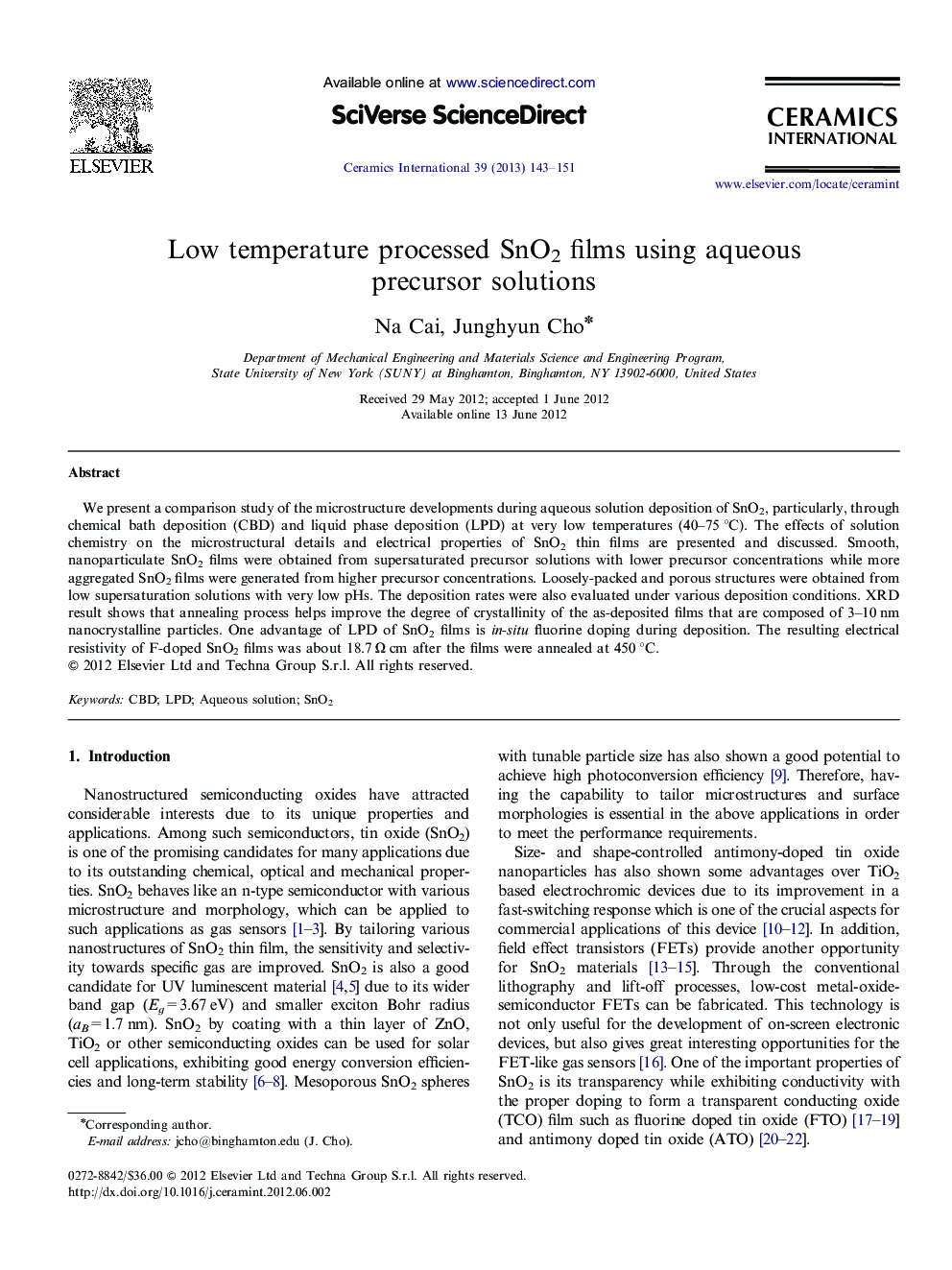| Article ID | Journal | Published Year | Pages | File Type |
|---|---|---|---|---|
| 1463443 | Ceramics International | 2013 | 9 Pages |
We present a comparison study of the microstructure developments during aqueous solution deposition of SnO2, particularly, through chemical bath deposition (CBD) and liquid phase deposition (LPD) at very low temperatures (40–75 °C). The effects of solution chemistry on the microstructural details and electrical properties of SnO2 thin films are presented and discussed. Smooth, nanoparticulate SnO2 films were obtained from supersaturated precursor solutions with lower precursor concentrations while more aggregated SnO2 films were generated from higher precursor concentrations. Loosely-packed and porous structures were obtained from low supersaturation solutions with very low pHs. The deposition rates were also evaluated under various deposition conditions. XRD result shows that annealing process helps improve the degree of crystallinity of the as-deposited films that are composed of 3–10 nm nanocrystalline particles. One advantage of LPD of SnO2 films is in-situ fluorine doping during deposition. The resulting electrical resistivity of F-doped SnO2 films was about 18.7 Ω cm after the films were annealed at 450 °C.
